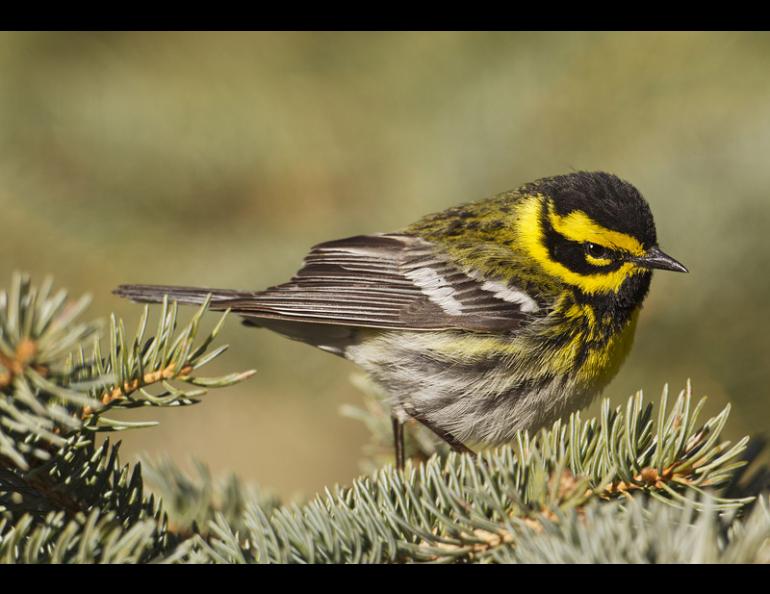
Woods of Alaska stir after long slumber
It’s late May, 118 miles from the Arctic Circle. Time for a walk to work.
The season has changed since February, the last time I wrote about walking through the North Campus of the University of Alaska Fairbanks. The North Campus consists of more than 1,000 acres that begins a few steps south of my door and ends at the university’s multistory research buildings. The spruce-dominated forest, bordered on all sides by asphalt roads, is lined with a few trails and patches cleared for science projects. Most days are still, now with the rhythmic clop of runners’ feet and the jingling of their dogs’ tags.
In great contrast to February, May is a time of life here. Then, the sun squatted low, projecting blue-white light that seemed to carry no heat. Now, all the snow crystals have melted into cool water that evaporated, flowed away or pooled in low spots.
Above the forest floor, solar panels unfold by the billions. Birch leaves on south-facing slopes approach full size while green dimes tremble on waist-high aspens. As they unravel, tacky balsam poplar leaves sweat the essence of mint.
Right now, the tiny leaves allow a great view of the forest, which is suddenly crowded with small bodies. Wood frogs quack on the ephemeral pond near Smith Lake. The desert-camo creatures emerge from a miracle of northern life — their hearts have resumed thumping after seven months frozen hard as a ball of gravel. Not counting the dazzling, baffling atmosphere of insects, wood frogs are world champions of prolonged freezing, according to a new study by Brian Barnes and Don Larson of UAF’s Institute of Arctic Biology. The frogs’ ability to remain frogsicles for more than half a year may trace back to their repeated freezing and thawing in the fall. Then, cold air oozes and retreats from shallow pockets within the forest floor in which the frogs hunker down.
The ringing croaks halt when a person sneaks close. Easier to spot are other visitors flooding the North Campus.
The big voice of the bug-eyed ruby-crowned kinglet, a recent arrival from the cactus country of the Baja Peninsula, rings from the top of a spruce tree. Flying by night over ocean and icefield, this four-inch bird with a fiery red cap sounds much larger than your thumb.
Above a circular 46-acre geophysical observatory established by the late appreciator of serendipity Jack Townshend sings the handsome Townsend’s warbler, a recent arrival that favors this area. The songbird, magnified by binoculars, wears the yellow and black painted face of a tribal warrior.
The warbler is adapting to the new look of the North Campus. Strong winds on an unusual day last November toppled a few dozen giants that stood since Vitus Bering was sniffing salt air off Alaska’s southern coast. Mature white spruce, trunks thicker than a moose, paid a price for retaining their needle leaves through the winter. When naked birch and aspens bent, spruce heavy with loaves of snow could not resist the push. With a series of great pops, their shallow root systems levered up from frozen soil like capsizing rafts.
The dead trees pressing heavy on the forest floor contain a few former nest sites of Townsend’s warblers. Biologist Steve Matsuoka studied the warblers near Anchorage in the 1990s, finding the birds produced the most baby warblers in the oldest, tallest white spruce. The scraggly tops of the old growth may have hidden nests from predators like red and flying squirrels.
Perched above the fallen barrel stems, the warblers will adapt, as they have on their wintering grounds that border the pavement of the Pacific Coast Highway from Seattle to San Diego.
As the male warblers practice their notes from the spruce tops, the late-arriving females will join them in about a week. When Matsuoka watched the birds, he noticed almost every male found a female within a day, “possibly hours” after she arrived.
After a few seconds of courtship, the male will flutter on top of the female. Soon after, the female warbler will thicken with six eggs.
With no help from the male (who will later pitch in to gather insects for the chicks), she will assemble a nest of dead branches and moose hair in the tallest white spruce. When birch and aspen leaves are full, mosquitoes are thick and darkness is a memory, a half-dozen reaching, squeaking beaks will add to the fleeting population explosion that — for a few months — fills these acres with song.





